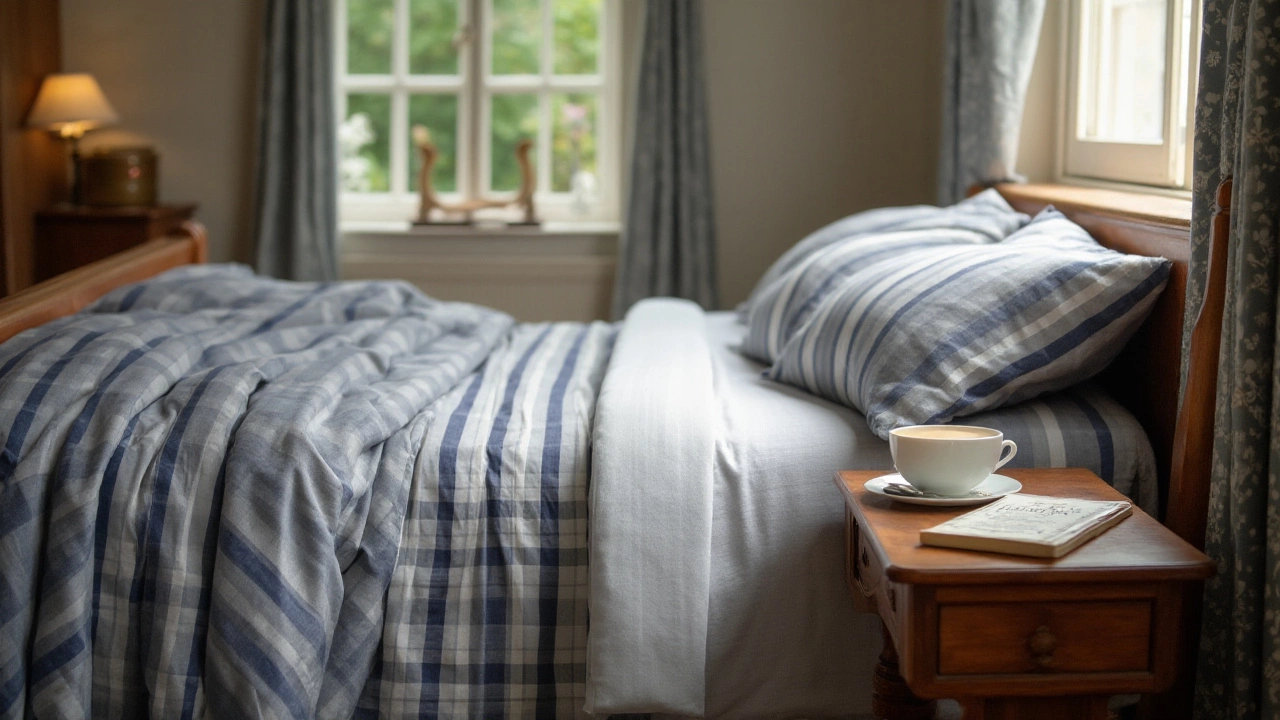Bedclothes Guide: Eco‑Friendly Picks, Care Tips & Style Ideas
When you think about a good night’s sleep, the fabric you lie on matters just as much as the mattress. Choosing the right bedclothes can boost comfort, cut waste, and add a fresh look to your room. Below you’ll find practical advice on picking sustainable fabrics, keeping them fresh, and styling them without breaking the bank.
Choosing Sustainable Bedclothes
Start with the material. Organic cotton is a safe bet – it’s grown without harsh chemicals, feels soft, and holds up well in the wash. Bamboo fabric is another favorite: it’s naturally antibacterial, breathable, and gets softer with each wash. Linen, especially European flax, offers a relaxed, slightly textured vibe that gets better with age.
Check the label for certifications like GOTS (Global Organic Textile Standard) or Oeko‑Tex. These stamps guarantee that the farm and factory followed strict environmental rules. If a product claims “eco‑friendly” but lacks a badge, ask the retailer for proof before you buy.
Colour matters for sustainability, too. Light shades show stains easier, which can lead to more washes. Darker or patterned fabrics hide spots, meaning you’ll wash less often. When shopping, pick a colour you love and that matches your room’s palette – it’s easier to keep the bed looking good longer.
Caring for Your Bedclothes to Last Longer
Washing is the biggest wear‑and‑tear culprit. Use cold water and a gentle cycle; hot water shrinks cotton and can damage bamboo fibers. Skip the dryer when you can – air drying reduces energy use and prevents shrinking. If you must tumble dry, choose a low‑heat setting and pull the sheets out while still a bit damp to finish drying on a line.
Rotate your sheets every few weeks. Swap the top sheet with the bottom or flip the duvet cover. This spreads wear evenly and keeps the look fresh. Use a mild, plant‑based detergent – it won’t strip the natural oils that make the fabric soft.Store off‑season bedclothes in breathable cotton bags, not plastic. Plastic traps moisture, which can cause mildew. Add a few cedar blocks or lavender sachets to keep moths away without harsh chemicals.
When a stain shows up, treat it fast. A mixture of white vinegar and water works well on most fabrics. Dab, don’t rub, to avoid pushing the stain deeper. For tougher spots, a small amount of baking soda paste can lift the mark without bleaching the colour.
Finally, think about upgrades. A simple quilt or throw can add warmth and change the look without buying a whole new set. Look for items made from recycled fibers or up‑cycled fabrics – they’re easy on the planet and give your bedroom a unique touch.
By picking the right materials, washing wisely, and rotating regularly, you’ll extend the life of your bedclothes and keep your bedroom feeling fresh. Sustainable choices don’t have to be pricey; they just need a bit of thought and care.
-

Exploring the World of Bedding: What Else Is It Called?
When we talk about bedding, it often refers to the materials laid above the mattress for comfort and decoration. Known colloquially by terms such as bed linens or bedclothes, bedding encompasses anything from sheets to comforters and pillowcases. Understanding the different terms used interchangeably with bedding can help in selecting the right set for your home. This article delves into the various names and provides tips on choosing and caring for these essential home decor items.
